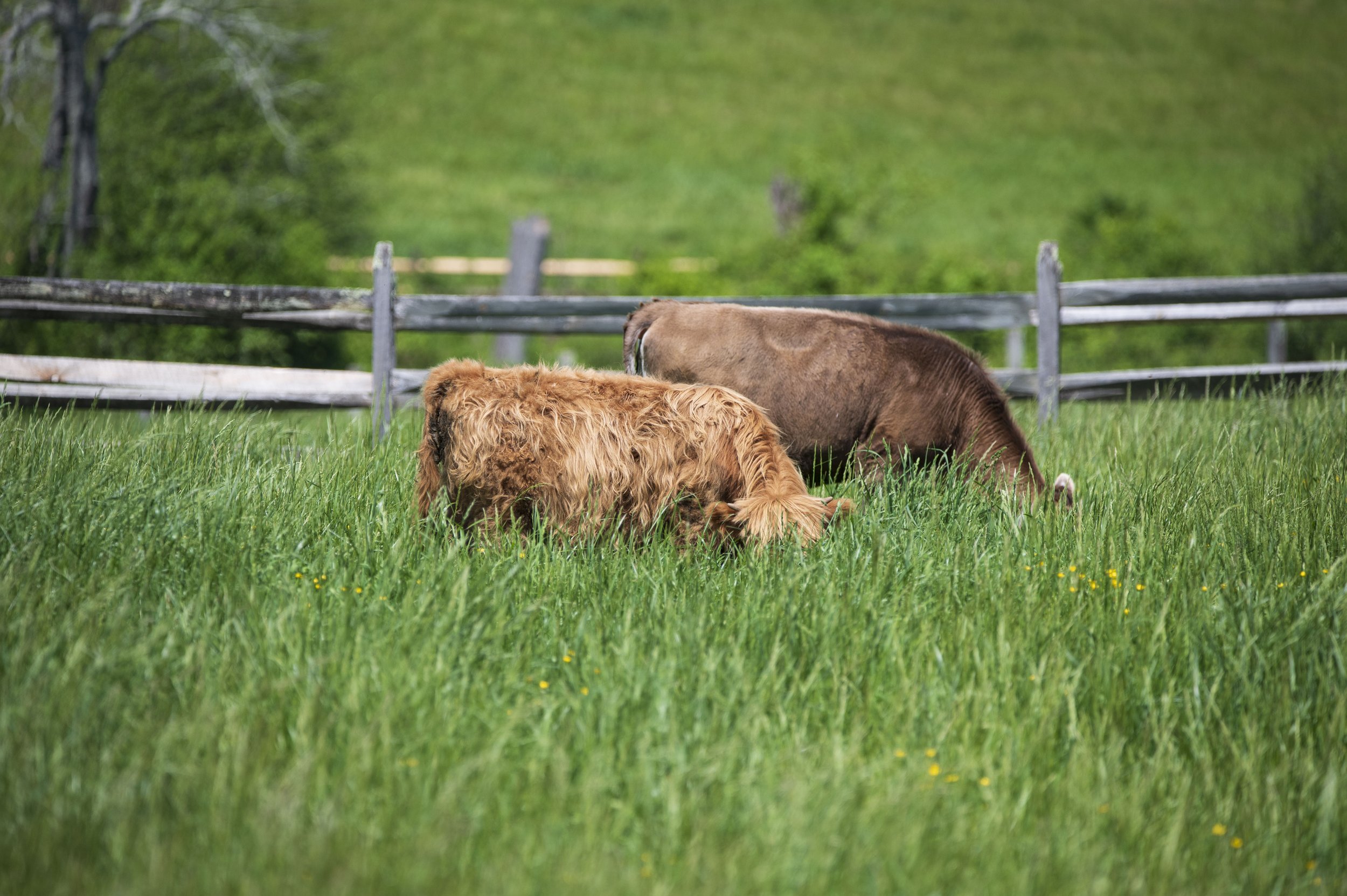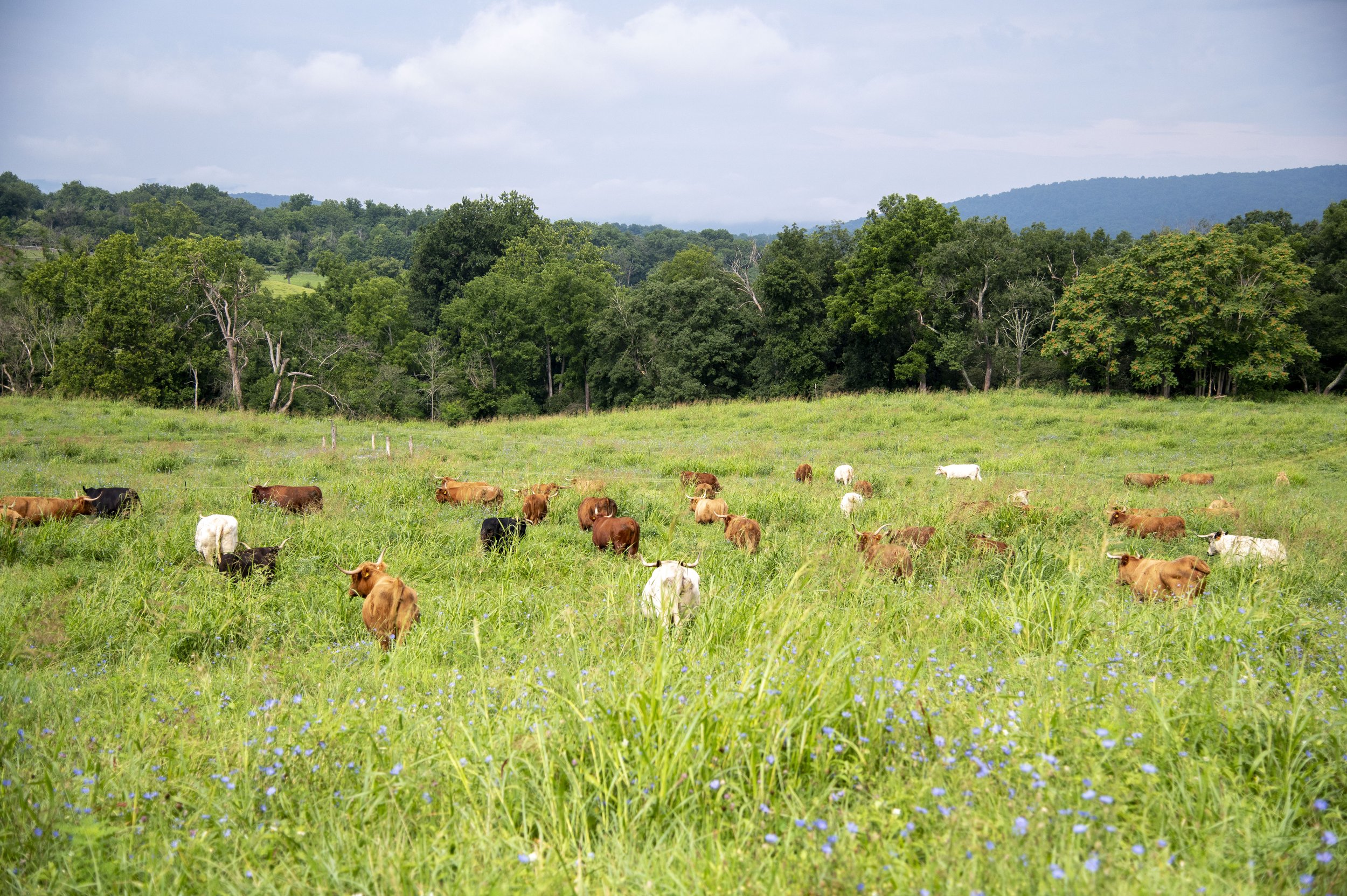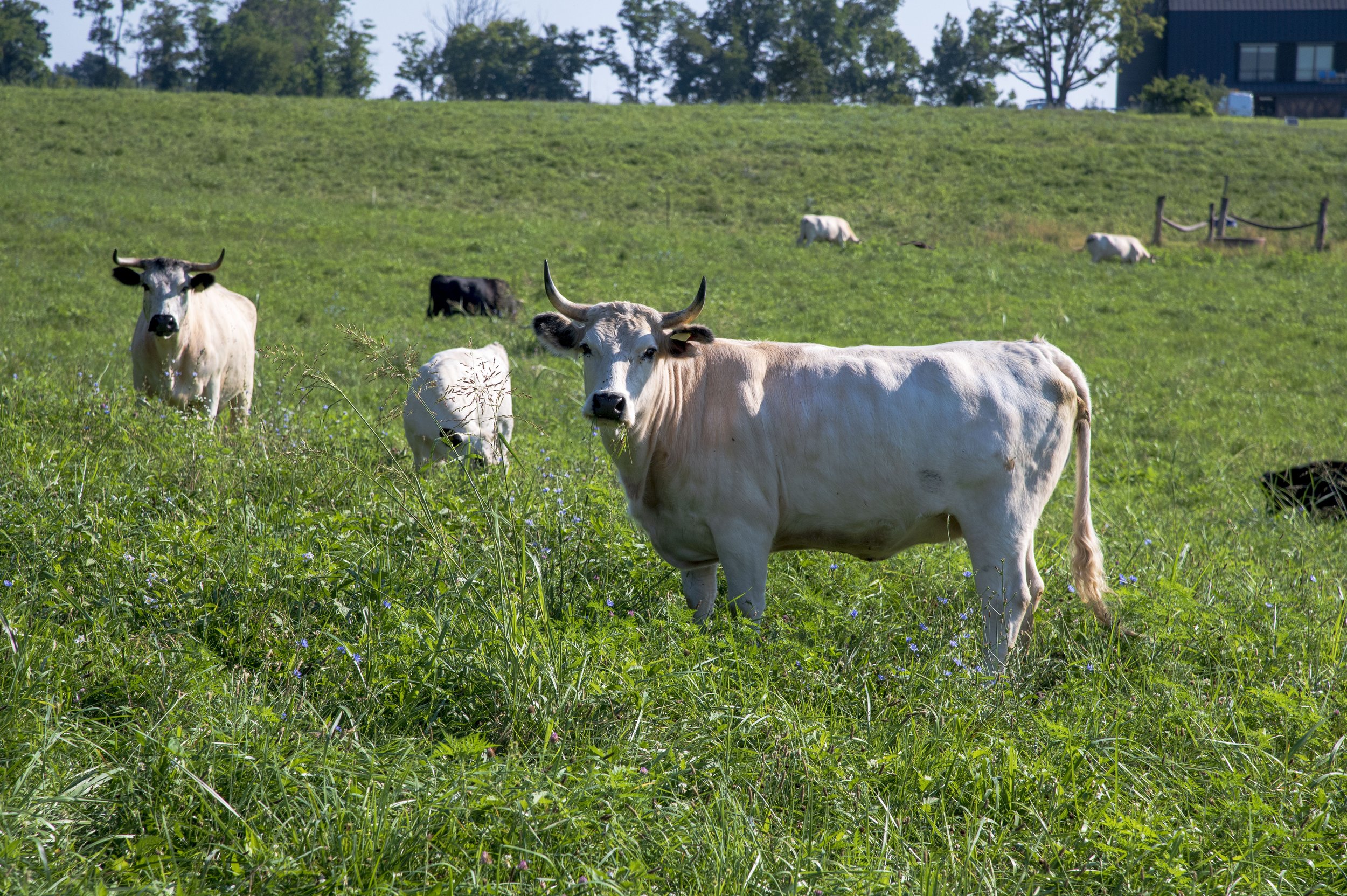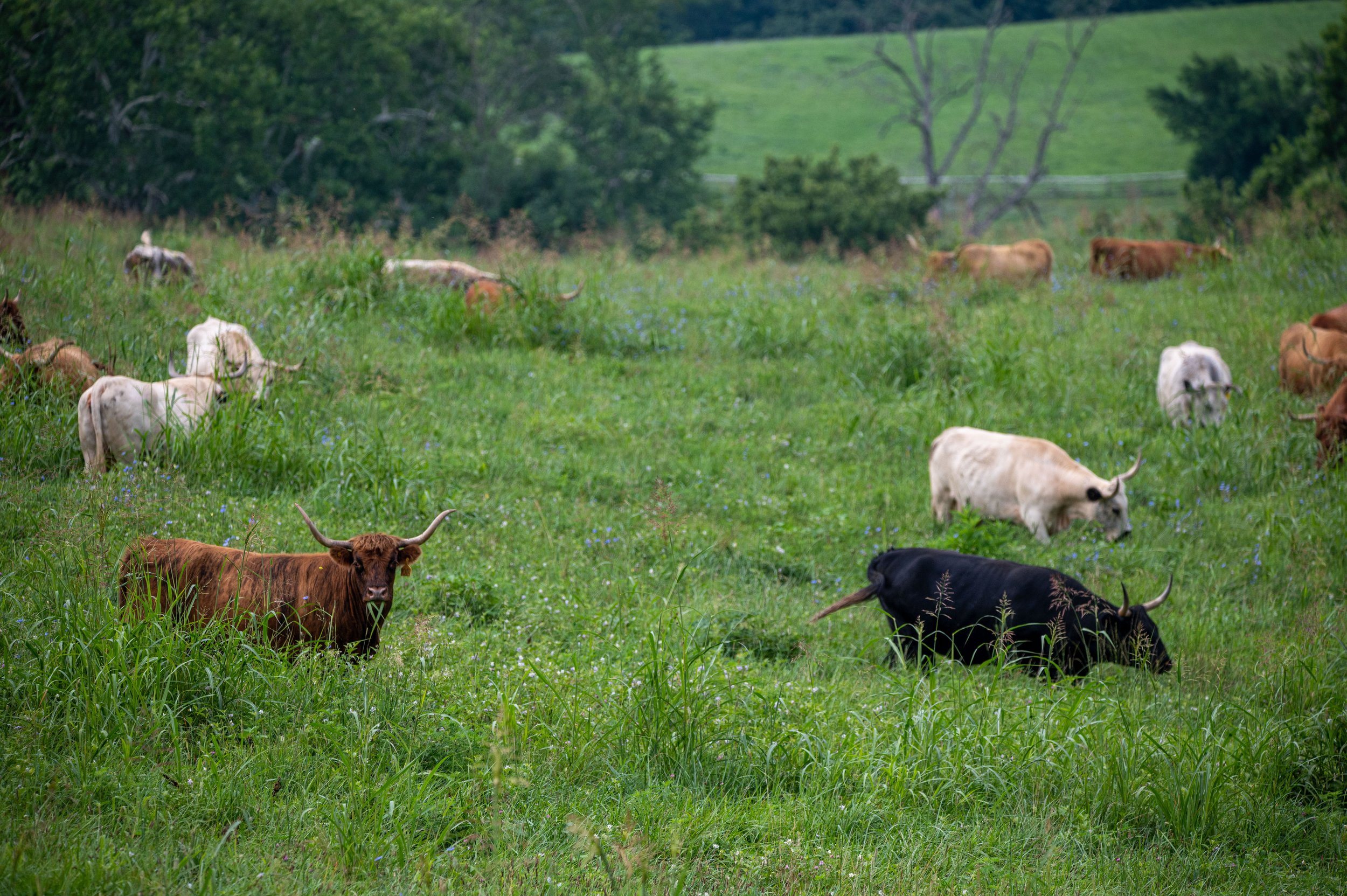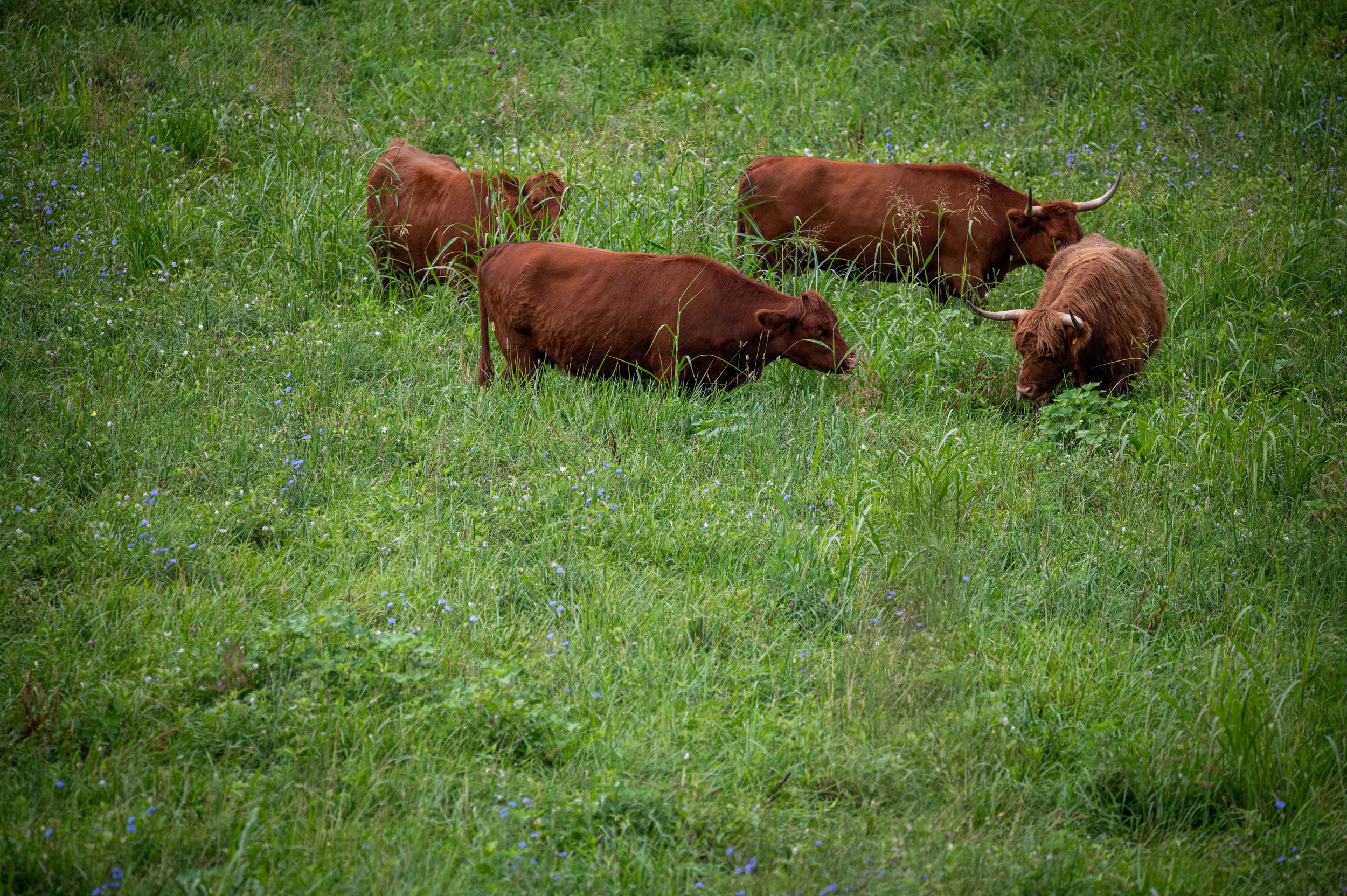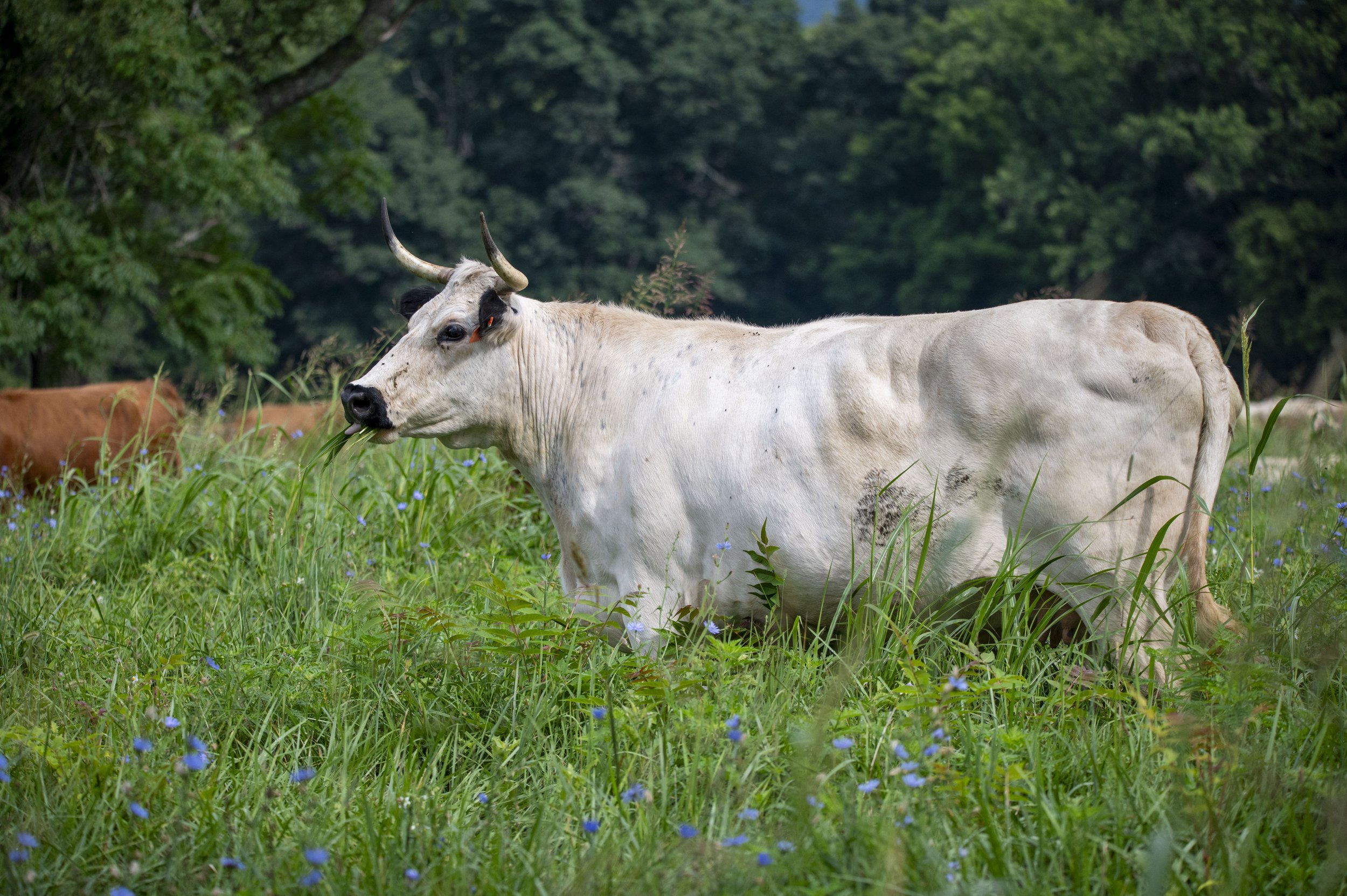The secret to better beef? It’s in the soil.
No-till farming leads the way to thriving livestock and climate resilience
Highland cattle graze on one of Ayrshire Farm’s no-till pastures in early summer.
This is the second installment in the WholeHarvest Year series, which aims to chronicle the farming cycle at Ayrshire Farm.
Take care of the land, and the land will take care of you.
That’s the philosophy that guides nearly every aspect of Ayrshire Farm. So, when it comes to raising the tastiest beef and pork possible, Ayrshire starts at the very root of things: the soil.
Since its inception more than 25 years ago, Ayrshire Farm has relied on “no-till” farming, a sustainable-agriculture practice that minimizes ground disturbance and rebuilds healthy topsoil by allowing nature to steer the course. The method eschews herbicides and diesel-powered machinery in favor of cover crops and animal grazing, and measures success by the health of the soil and the quality of the beef.
For Virginia’s first Certified Organic farm, this type of regenerative land stewardship is intuitive. No-till farming strives to restore the balance of agriculture with the natural world – farming with nature, rather than against it. As Farm Manager Chris Damewood sees it, he already has everything he needs to operate successfully without tearing up the ground or using chemicals. When you start to manipulate the land and disrupt biodiversity, “that’s when things go wrong,” he says. “This is the natural, more passive way of doing things.”
Enhancing Pasture Diversity
For decades, industrial farming often involved turning over surface soil to break up compacted ground, then smothering the land with herbicides to kill off competing vegetation before planting crops. Tilling may boost production in the short term, but in the long term, it harms soil fertility, causes erosion, releases carbon from the soil into the atmosphere, and kills the organisms that make up a healthy, balanced soil biome.
Tilling also relies on hours of labor as well as diesel-powered equipment, which spews harmful fossil fuels into the environment. The USDA estimates that farmers who use no-till farming save 588 million gallons of diesel fuel each year — enough to power more than 720,000 homes for a year. The practice also prevents at least 5.8 million tons of carbon-dioxide emissions — the equivalent of taking over 1 million cars off the road.
Most people think about tilling in relation to growing crops, but it’s just as important for raising livestock. Ayrshire Farm’s heritage-breed cattle — Scottish Highlands, Ancient White Parks and English Longhorns — rely on grass and forages as the main source of their diet, so why not give them the best food possible?
“Our pastures are the number one source of energy for our cattle,” says Michael Estienne, large livestock manager at Ayrshire Farm. “So, if we keep our pastures healthy and thriving, it translates to quality beef production.”
Good soil makes for good grass. And good grass makes for happy, tasty beef.
On a cool and cloudy early spring day, Ayrshire Farm’s Ismael Cortes Arellano is backing up his tractor to a wide aerator attachment, comprising a row of sharpened, spinning disks. He hooks up the machine and starts moving across the length of the pasture, the disks slicing rows a couple of inches deep into the dark soil. The process might not look like much, but as it moves along, the aerator is also loosening dirt, incorporating oxygen into the ground, and spreading manure from Shire draught horses that were grazing here recently.
In a few days, Cortes Arellano will pass over the land again with a different tractor attachment: an Aitchison Seedmatic no-till seed drill. It too cuts shallow furrows into the pasture, but this time leaving a trail of seeds in its wake. Depending on the season, the mix can contain such seeds as timothy grass, perennial rye, clover and legumes – prized for their ability to replenish levels of nitrogen and other nutrients. In summer, blends of cow-happy cover-crop varieties like dwarf sorghum, cow peas, pearl millet and alfalfa are sown across the fields to sustain rich bovine diets.
While Ayrshire and other no-till farms use tractors to seed pastures, it takes far less time and uses considerably less fuel than conventional tilling operations. No-till farming saves an estimated 50 to 80 percent less fuel and and 30 to 50 percent less labor than tillage-based agriculture.
A Perpetual State of Harmony
The cattle not only benefit from no-till farming, but are a central component of the process, too. Once a pasture has been seeded with healthy forages and left alone for a few months, it’s ready for animals. The cattle are given several days in the pasture, feasting on the nutrient-rich tops of grasses, loosening soil, keeping weeds at bay, and depositing beneficial manure and urine onto the field. They’ll then move on to another pasture and then another, repeating the process over and over again throughout the farm’s 800 acres.
This symbiotic relationship between animal and land keeps the whole farm in a perpetual state of harmony, giving and taking from each other in equal measure. It’s what cattle are meant to do. They’ve been bred for this.
“Cows are our herbicide,” Damewood says. “We’re using cattle the way they’re intended, as tools, rather than using diesel or ripping up the soil.”
This approach underscores a fundamental truth: when farmers work with the earth and not in competition with it, both the land and the livestock thrive. Ayrshire Farm’s commitment to no-till farming showcases a model of regenerative agriculture that benefits the environment, the animals, and ultimately, the people who get to enjoy the fruits of all this labor. It’s a hopeful path forward for sustainable farming practices, proving that taking care of the land indeed leads to the land taking care of us.
